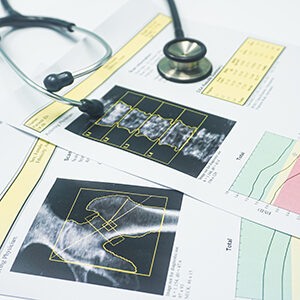Obstetrics/Gynecology
Your experience in the Department of Obstetrics and Gynecology is guided by a team of experts. You'll receive an individualized care plan based on your goals and a thorough evaluation using the latest diagnostic technology.
Are you a patient who already receives care at Lincoln Center? Starting Oct. 1, 2023, Stormont Vail will be delivering the same amazing care, at the same facilities, with the same physicians! As affiliates, Lincoln Center and Stormont Vail Health already use the same Patient Information System. What does this mean for you? Absolutely NO hassle when it comes to your in-depth, personal, health records.
Why Choose Stormont Vail Health?
Our experienced OB/GYN team puts you first by providing high-quality, personalized care the way you want it. We continuously strive toward offering all our services in an accessible, timely and respectful manner. We know it's important that you have a great experience and that every individual deserves the best care. We have been here for generations and will be here for you for all of life’s next steps.
Obstetrics
Obstetrics is the total management of pregnancy, including:
Routine prenatal care and delivery
Caring for medical and other problems associated with pregnancy
Genetic counseling for pregnancy
Maternal fetal medicine - high risk pregnancy
Pregnancy Diabetes
Gynecology Services
Gynecology Services addresses issues with the female reproductive system, including:
Annual wellness exams - breast exam, Pap tests, pelvic exams, and blood screens
Cancer detection
Contraception
Pregnancy planning
Surgery & Procedures
Listed below are some of the innovative procedures we do to enhance the lives of our patients:
Health Library
Specialty Care

At Stormont Vail Health, we take pride in offering high-quality specialized health care. We invest in the best providers and most up-to-date technology and services to improve the health of those we serve. Our advanced specialty care services ensure you don’t have to travel far to receive expert care. Featured Specialty Care Heart Care Stormont…
Podiatry

Home » Specialty Care » Podiatry Healthy feet help you stay active, connected, and involved. Our Podiatry team supports foot and ankle health for every step of your life-because you deserve the best care, close to home. The Foot and Ankle Clinic accepts self-referrals. Call (785) 272-7600 to schedule your appointment. Better Foot and Ankle…




















